Maria Fernanda Paes de Barros takes us to a Xingu village where she partakes of the moitará exchange to commission work for her furniture.
(A message to the reader.)
I’m a designer and an artist, but above all I am Brazilian. I feel blessed to be born in a place so rich in culture, traditions and nature, but I also feel that there are many Brazilians who don’t feel that way, so I embraced it as my responsibility to show the wonders of our country and its people and their countless possibilities. I intend not to adapt the handcrafts techniques to the market demands, instead I want to make the market see that they are beautiful exactly as they are and that they can be used from a simple house at the beach to a six-star hotel in the metropolis.
I am passionate about Brazilian handicrafts, our artisans and traditions and the way they are passed down from generation to generation. It is wonderful what they can do using the materials that nature provides around them. From an early age I had contact with Brazilian art, music and culture. My mother was a teacher of fine arts and music, and she always encouraged me and my sister to create freely, presenting us with different supports and materials in addition to having at home different musical instruments characteristic of the cultures that make up Brazil cultural richness, such as berimbau, maraca, afoxé and atabaque.
As a public-school teacher, she used her imagination to create instruments to be able to form bands with her students and even leaves and flowers served as material in her art classes, in which I participated as an assistant whenever I could. She was born on a farm, in the middle of the Pantanal of Mato Grosso, also bringing the nature of the region close to us through stories from her childhood. Chalanas (boats) went down rivers that were filled with piranhas at certain times of the year, seriemas strolled through the abundant vegetation and immense mango trees provided refreshing shadows. I grew up in this rich and playful universe where admiration, respect and appreciation for differences were always present.
A few years ago, I tried to understand more about my family’s history, as a way to understand more about myself. In this search, I ended up discovering part of the history of the Paes de Barros family. I discovered that my ancestors, Fernando and Arthur Paes de Barros, left the interior of São Paulo to venture into Brazil. They were the ones who discovered and baptized the Mines of Mato Grosso in 1734, impressed by the beauty of the seven leagues of thick brush that they had crossed to get there. I cannot help imagining them entering the indigenous lands and, overshadowed by the brilliance of gold, they were unable to see the true wealth they had found. I don’t judge them, there were different times and they had other needs and goals in mind, but I believe that, even without realising it, they ended up overcoming different peoples and cultures.
In a way, I feel that today I attempt to do the opposite, valuing and bringing back to the place everything that they were not able to see, as if fulfilling an important mission that always drives me, despite the difficulties that are encountered along the way. As far as I know, I don’t have indigenous blood, but I feel that I have an “indigenous soul”, if I can say that.
In April 2019 I met Kulikyrda Mehinaku when he came to São Paulo to participate in an art fair. Later that year he returned to São Paulo and came to me to help him sell some pieces that he had brought with him. An instant friendship was born in these few days of contact, which ended with an invitation from him for me to visit his village, in the north of the state of Mato Grosso. That was how I ended up in the Kaupüna Village, in the Xingu Indigenous Territory, south of the Amazon Forest. I lived with Kulikyrda and his family for a few days, in a heat that exceeded 40 degrees Celsius, learning the traditions and stories of the Mehinaku ethnicity.
Watching Kulikyrda’s mother, Kayanaku Aweti, cook the traditional cassava beiju sitting on the floor, inside her hut in Kaupüna village, transported me to another dimension. I stood still there, looking at the scene as if I were admiring something divine. The strength of a people, their resilience that makes them insist on remaining who they are.
Everything there was magical. The colors of the fire under the clay pot, in various shades of orange, reflected on the dirt floor, in the hands that moved around it in circular motions, gently spreading the manioc granules until a thin layer occupied the entire dimension of the surface. Gradually the grains, transformed by the heat, came together, forming a single mass that was only then considered ready for consumption. I wish there were a fire capable of delicately uniting all of us, human beings, into a single group, without distinction of colour, belief, or gender.
The exchange is part of many indigenous cultures. Called “moitará” and done traditionally by women, it consists of disposing on a mat what a woman has to offer, while saying what she needs. Whoever has what has been asked and wants what has been offered stands up and removes the object from the top of the mat. This movement continues until everyone has arranged on the surface of the mat what they have brought and said what they would like to receive in return, only then do the women leave the place where they are to go pick up the objects exchanged and return to hand them over to the right person, consummating the exchange. Something that looks so simple, but that demonstrates understanding, respect and especially trust. A great lesson for us foreigners, so to speak, that after we have suffered a few blows in life, tend to distrust everything.
The Mehinaku people create baskets and mats with buriti stalks, nets made with yarns wrapped with hands that come and go on the thighs, zoomorfos benches carved in wood, but do not have the tradition of working with clay, this is an art of Waurá ethnicity. To be able to make the beiju it is necessary to carry out the moitará, the basis of their food depends on exchange, respect, and trust. Food for life.
- Beiju Center Table – Xingu Collection by Maria Fernanda Paes de Barros; photo: Lucas Rosin
- Kaupüna Swing – Xingu Collection by Maria Fernanda Paes de Barros – Picture Lucas Rosin
- Detail of the embira bark that mooring the Mehinaku homes, called oca. The embira bark is like our nail to them.
The Beiju Table was created from the emotions experienced, from the admiration felt, from the desire to share so that more people understand, know, value and respect. The chosen wood, the brown cabreúva, has the reddish tone of the indigenous skin, tanned by the sun, painted by the annatto. Carved in the form of the ceramic pot, with its delicate curvatures, it remains immobile, supported on three bricks with the right angles that transmit a certain solidity and security, despite the fragile connection between them.
Oh, but what about the fire? That magic light that illuminated the scene described in this story? It could not be ignored. I need to convey the sense of amazement I felt in that moment.
- Tsapyya Aweti weaving a mat
- Makuai Mehinaku
- Yahati Mehinaku’s oca. Yahati is the Kaupüna Village chief.
- Maria Fernanda weaving the mat that will become the door of Shelter Credenza
Women in Kaupüna village usually make necklaces with tiny beads, passed in a delicate thread by means of a thin and long needle. I lost track of time following the rapid movements of Kayanaku Aweti’s hands making the beads slide slowly, add up in turns and more turns, which sometimes go over two hundred. Small beads are joined by a thread and decorate naked bodies, which dance together in sacred rituals, accompanied by the songs, the sound of flutes and feet as they hit the ground in sync. It is these necklaces that remain united around the Beiju Table, in up-and-down movements that sometimes overlap, while valuing the identity of each one and the strength of the whole. In a way, the women and I carried out another moitará without realizing it. The exchange was based on trust and admiration, where the women of the village allowed me to translate part of their lives and I paid them homage through the Beiju table.
This is the work at Yankatu, a brand created by me, Maria Fernanda Paes de Barros, in 2015, with the purpose of developing projects with artisans throughout Brazil, to add tradition and contemporaneity, maintaining the identity and importance of each party. This was the way I found of showing the beauty of Brazilian handicrafts, telling the stories of the artisans who create and keep them alive for generations, sharing knowledge that we often do not learn in school, nor in universities, demonstrating their numerous possibilities of use and the importance of valuing them for the good of the communities that make them, the preservation of nature around them and our feeling of belonging to something greater.
At Yankatu all the pieces have a soul, mine and that of the artisans who inspire them and whose works are added to mine. They tell stories. They are always accompanied by a small book, whenever possible stored in a compartment carved in wood. There are photos taken in the communities, texts about whys and hows and blank pages, because their stories need to continue to be told, now added to the lives of those who acquired them.
Every trip I make is a deep dive into the life of artisans, in the daily lives of communities. They are doors that open and show their essences, in an endless exchange of knowledge and stories, of smiles and looks, which share dreams and lives. This exchange is what moves me, it is where I learn a lot and I leave a lot of myself too, building a bond that unites us forever. With each dive I go deeper also inside me and, with each return to the surface, I feel like I am reborn, purer, stronger, more me.
Design and art are transformational tools. They not only transform materials into form, function, and beauty, they transform lives. With this feeling I keep travelling and carefully writing stories with many hands, translated into pieces of furniture and works of art that win the world and take with them the Brazilian traditions and the lives of people who struggle to continue feeding their families.
About Maria Fernanda Paes de Barros
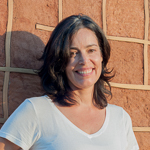 I was born and raised in the city of São Paulo, but the need to live closer to nature ended up making me move last September to the city of Jundiaí, 50 km from the capital, at the shadow of an Atlantic Forest reserve, with woodpeckers and hummingbirds as neighbours. My work as a designer and artist takes me to travel around Brazil to do immersions and research, but I also travel to work with carpenters (I do the finishing), which is situated even more in the interior of the state of São Paulo. There, together with two luthiers who became great friends, I give life to the pieces I create. My head does not stop creating and my heart does not stop wanting to transform the world. I currently have two projects in progress. The first, together with the Pataxó ethnic group, which is located in the south of Bahia, gave rise to two works of art that participate in the Organic exhibition, of the 4th Circular Art at Praça Adolpho Bloch, in São Paulo, and will also give rise to the 2021 collection, which will be called Sons of the Earth, in which I intend to present the wealth of the Pataxó people that resist colonization since 1500. I seek to present their traditions and the delicacy of their souls through a poetic work, seeking to draw attention to their strength and beauty and provoking reflections on what has been happening to the indigenous peoples in the country.
I was born and raised in the city of São Paulo, but the need to live closer to nature ended up making me move last September to the city of Jundiaí, 50 km from the capital, at the shadow of an Atlantic Forest reserve, with woodpeckers and hummingbirds as neighbours. My work as a designer and artist takes me to travel around Brazil to do immersions and research, but I also travel to work with carpenters (I do the finishing), which is situated even more in the interior of the state of São Paulo. There, together with two luthiers who became great friends, I give life to the pieces I create. My head does not stop creating and my heart does not stop wanting to transform the world. I currently have two projects in progress. The first, together with the Pataxó ethnic group, which is located in the south of Bahia, gave rise to two works of art that participate in the Organic exhibition, of the 4th Circular Art at Praça Adolpho Bloch, in São Paulo, and will also give rise to the 2021 collection, which will be called Sons of the Earth, in which I intend to present the wealth of the Pataxó people that resist colonization since 1500. I seek to present their traditions and the delicacy of their souls through a poetic work, seeking to draw attention to their strength and beauty and provoking reflections on what has been happening to the indigenous peoples in the country.
The second project is called Kulá, which means beads in the Aruak language, of the Mehinaku ethnicity. This project proposes, for the public spaces of the city of São Paulo, the installation of new waste bins that unite art, indigenous tradition, recycling, sustainability and social impact. Through it, I seek to bring indigenous art to the centre of attention and contribute to reflections on the relationships between art, design, artisanal production, public space and indigenous cultural heritage. The purpose is to generate financial and commercial autonomy for the women of the Kaupüna village and, depending on its outcome, we can reach the neighbouring villages, even if from other ethnicities, since the art of beads is the domain of all women that lives in the Xingu Indigenous Territory.
✿
Message
Hi, My name is Maria Fernanda. I am Brazilian, born and raised in the city of São Paulo, but always in love with the nature of my country and with the ancestral traditions that we have here.
In my work I seek to convey not only beauty, but the importance, value and emotions that these traditions carry.
To create, I need to dive.
Plunge headlong into centuries of stories,
in today’s and former lives,
in the roots of a people, in my own origins.
Diving naked,
stripped of what I know and what was imposed on me by the society in which I live.
Only then I learn.
Only then I do truly understand.
Only in this way I do live like mine, realities that are not,
but that could very well be …
With each dive I go deeper, I get short of air,
I insist, insist and go further, in an almost infinite surrender.
Getting back to the surface is quite an exercise.
I return different,
even more me, even more us.
I am born again.
I relearn to live.
That’s how I feel with each trip I take, each new community I know, each new relationship that arises and from which the pieces I create are born. I create are born.
Thank you for being here, listening to me and reading this story that is not just mine.”

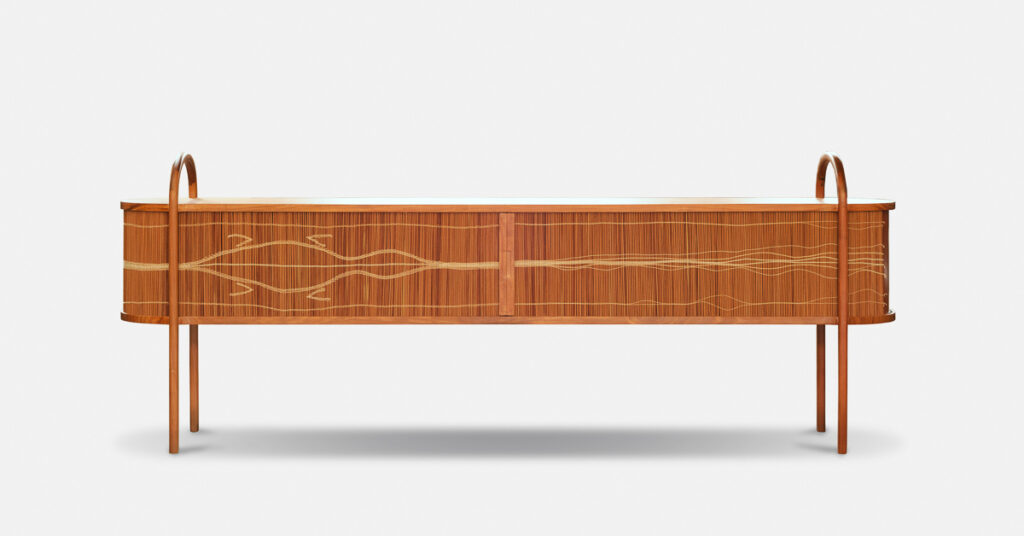


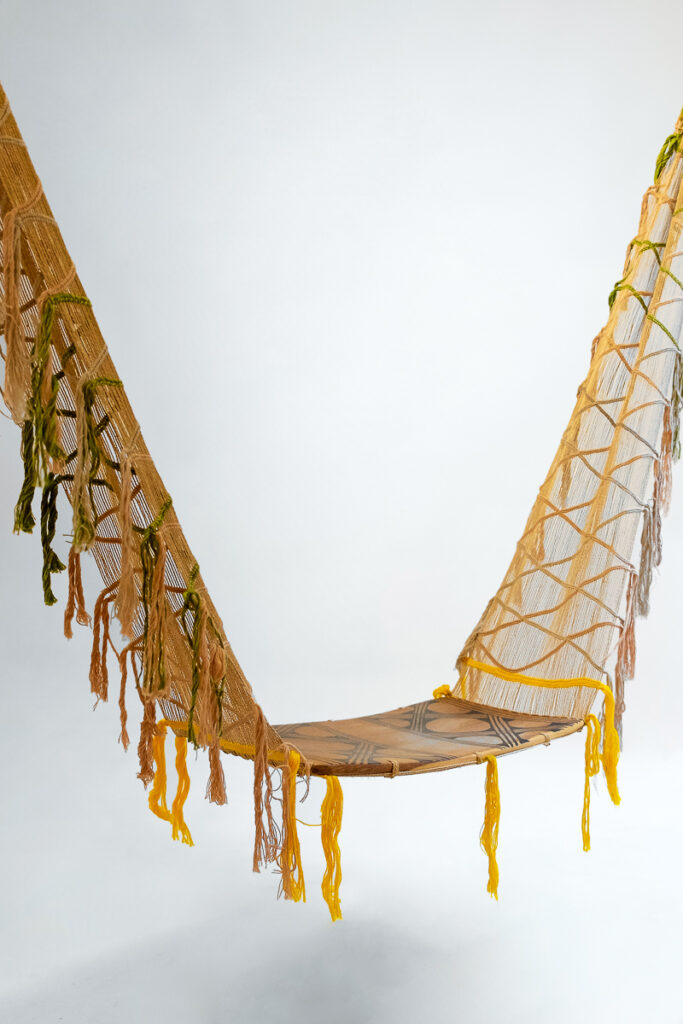

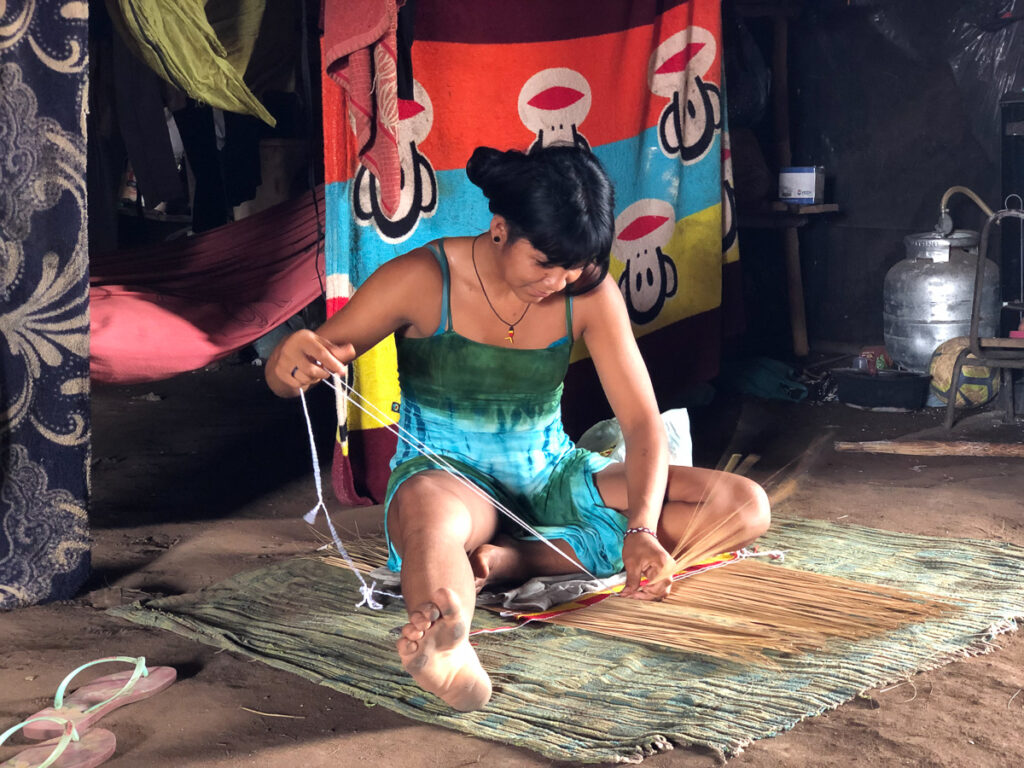
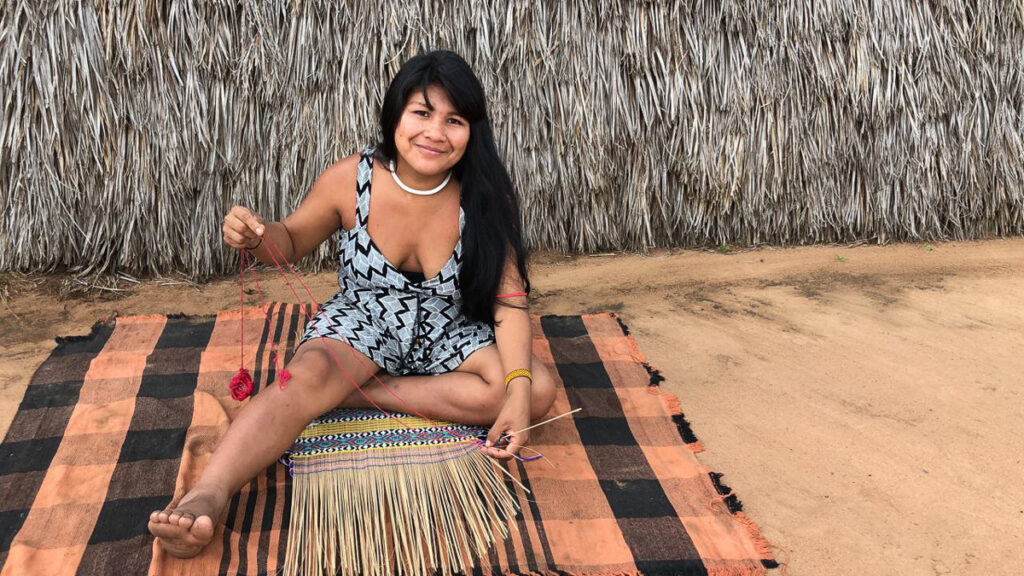
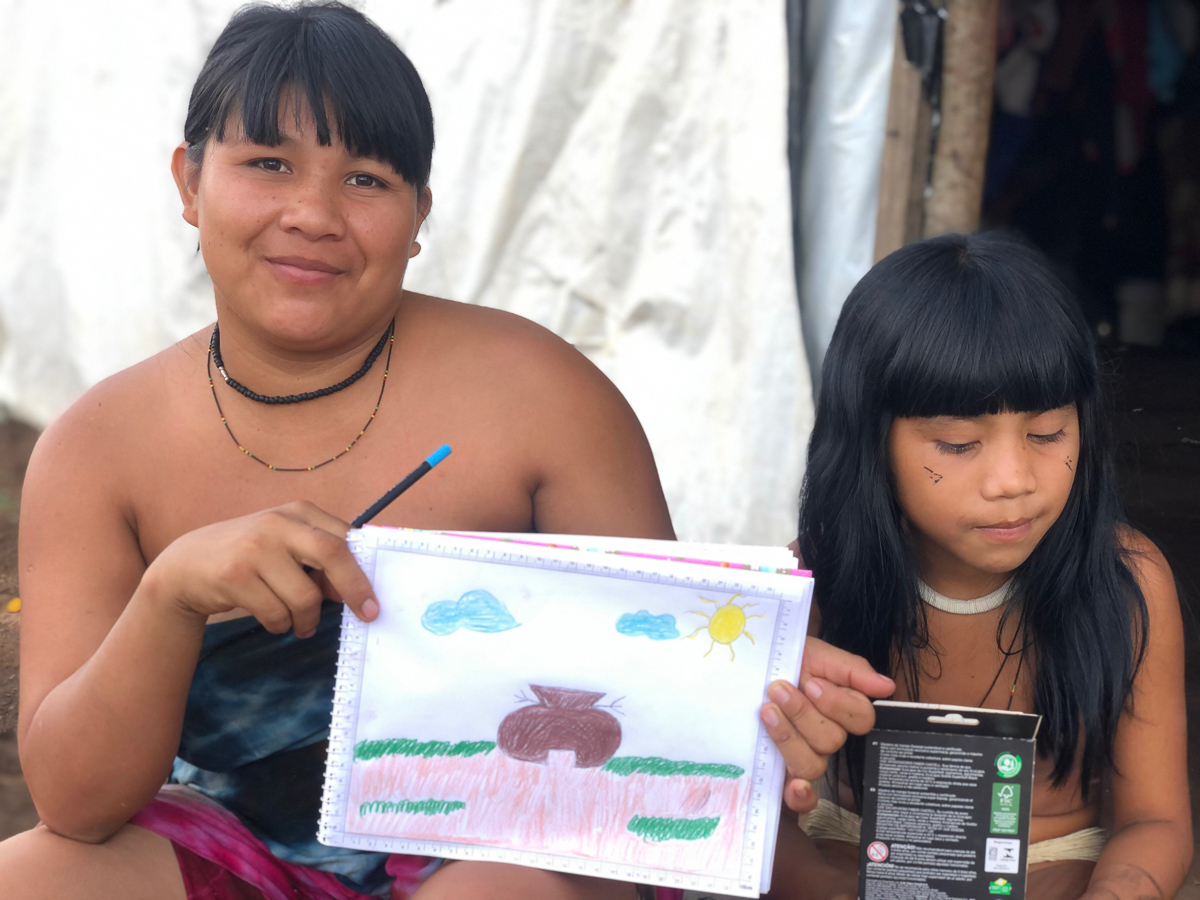
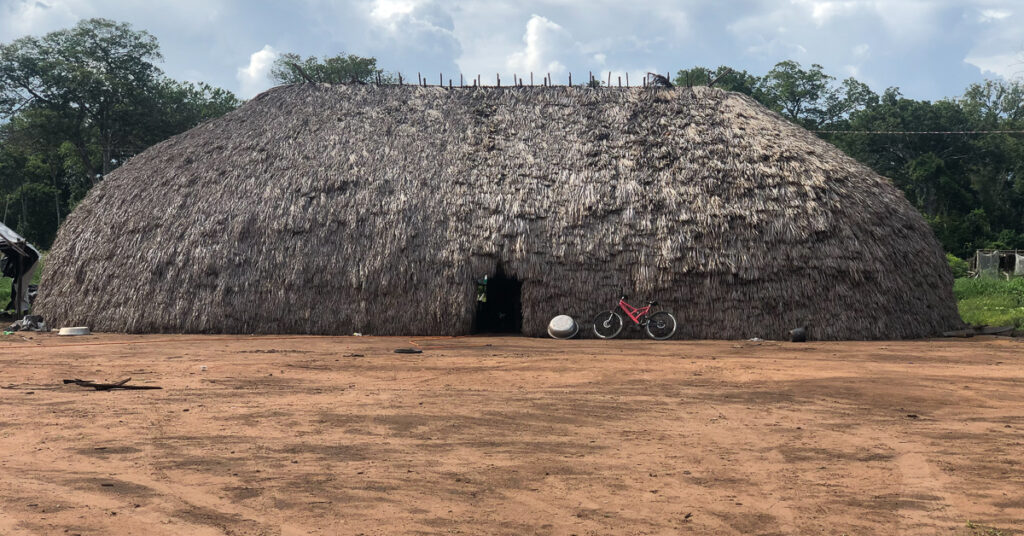
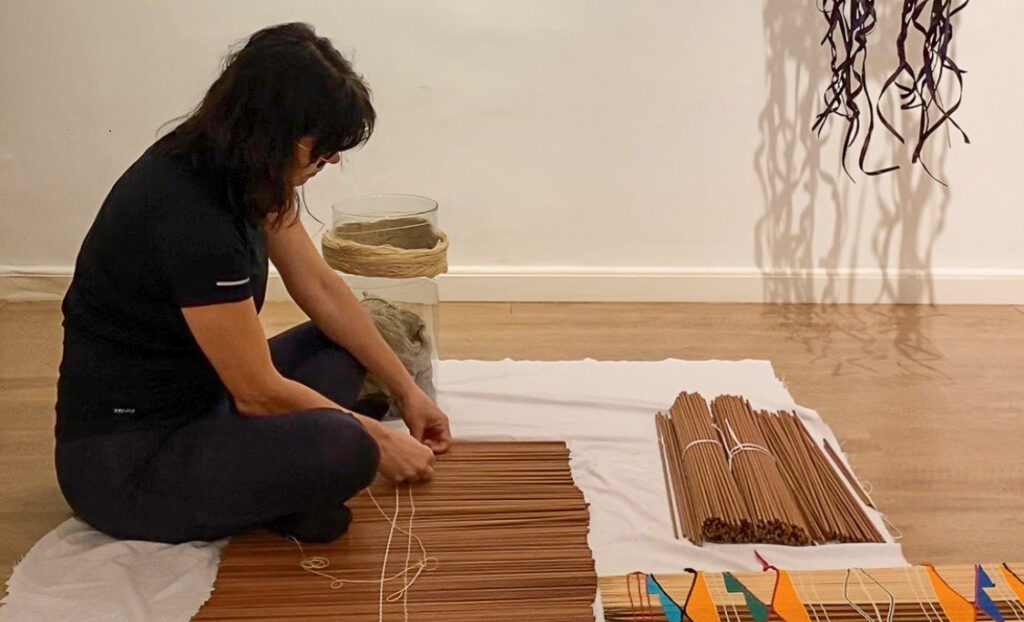

Comments
It was so nicely presented article, which felt so poetic and at the same time real. Very excited to revisit here again.